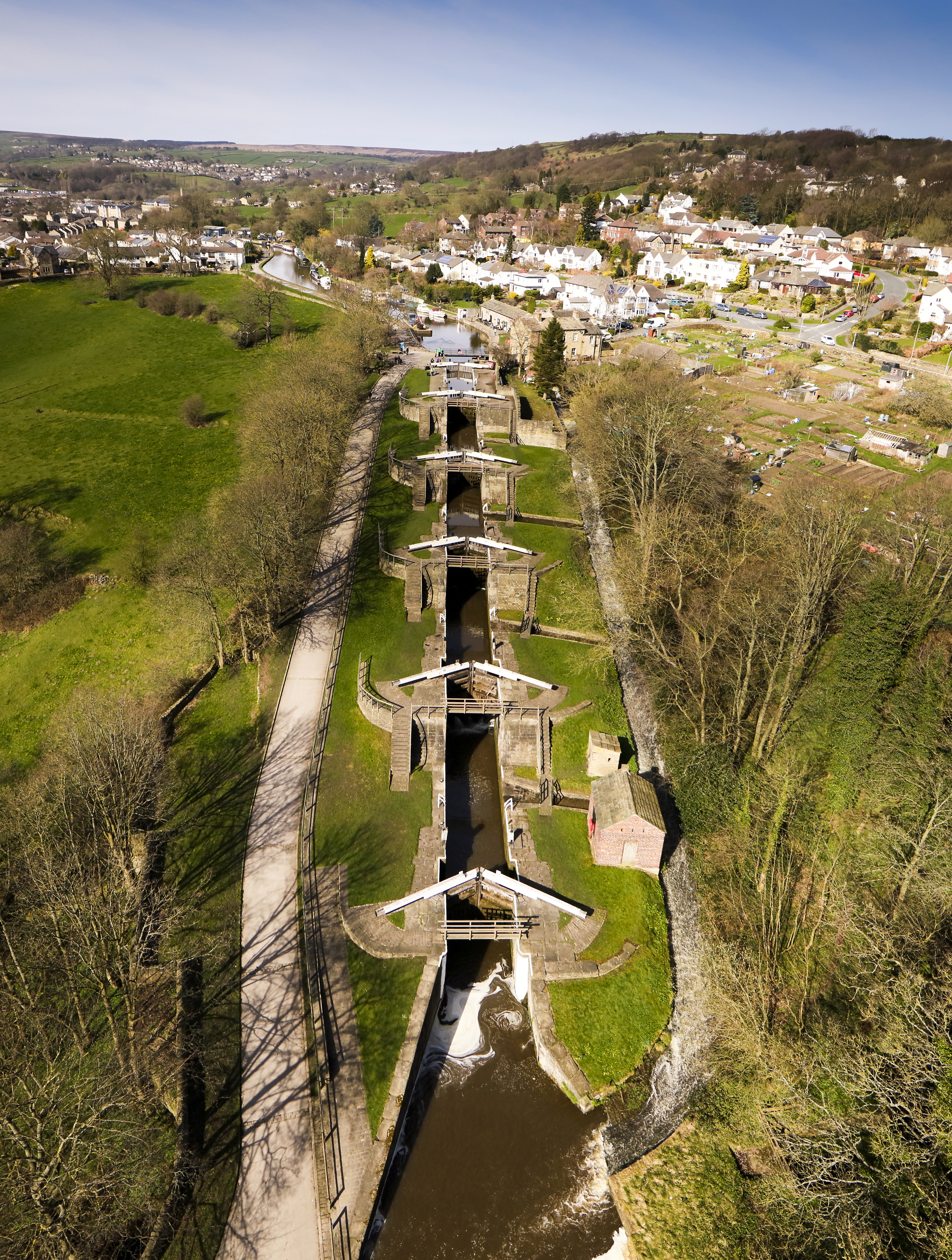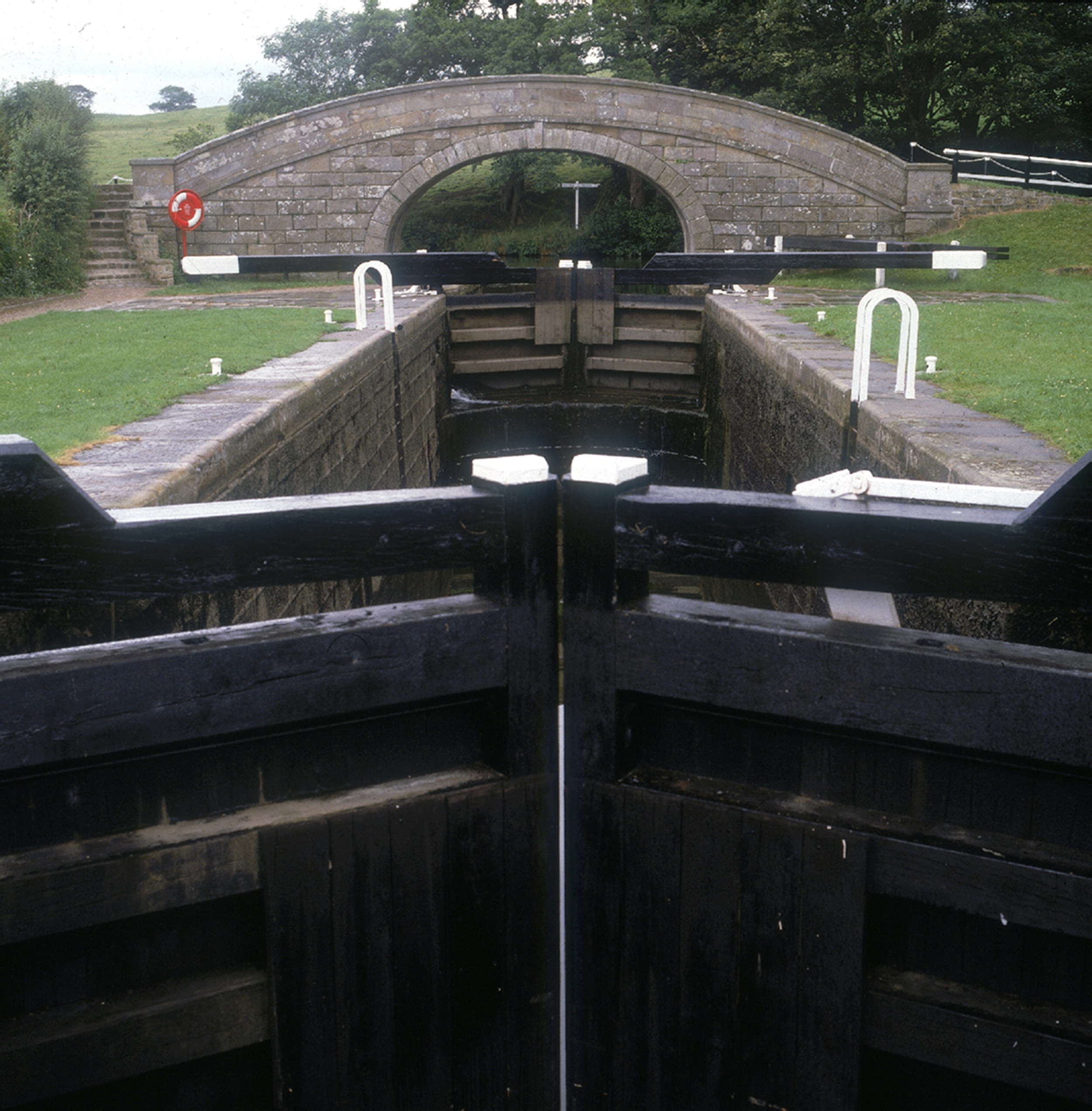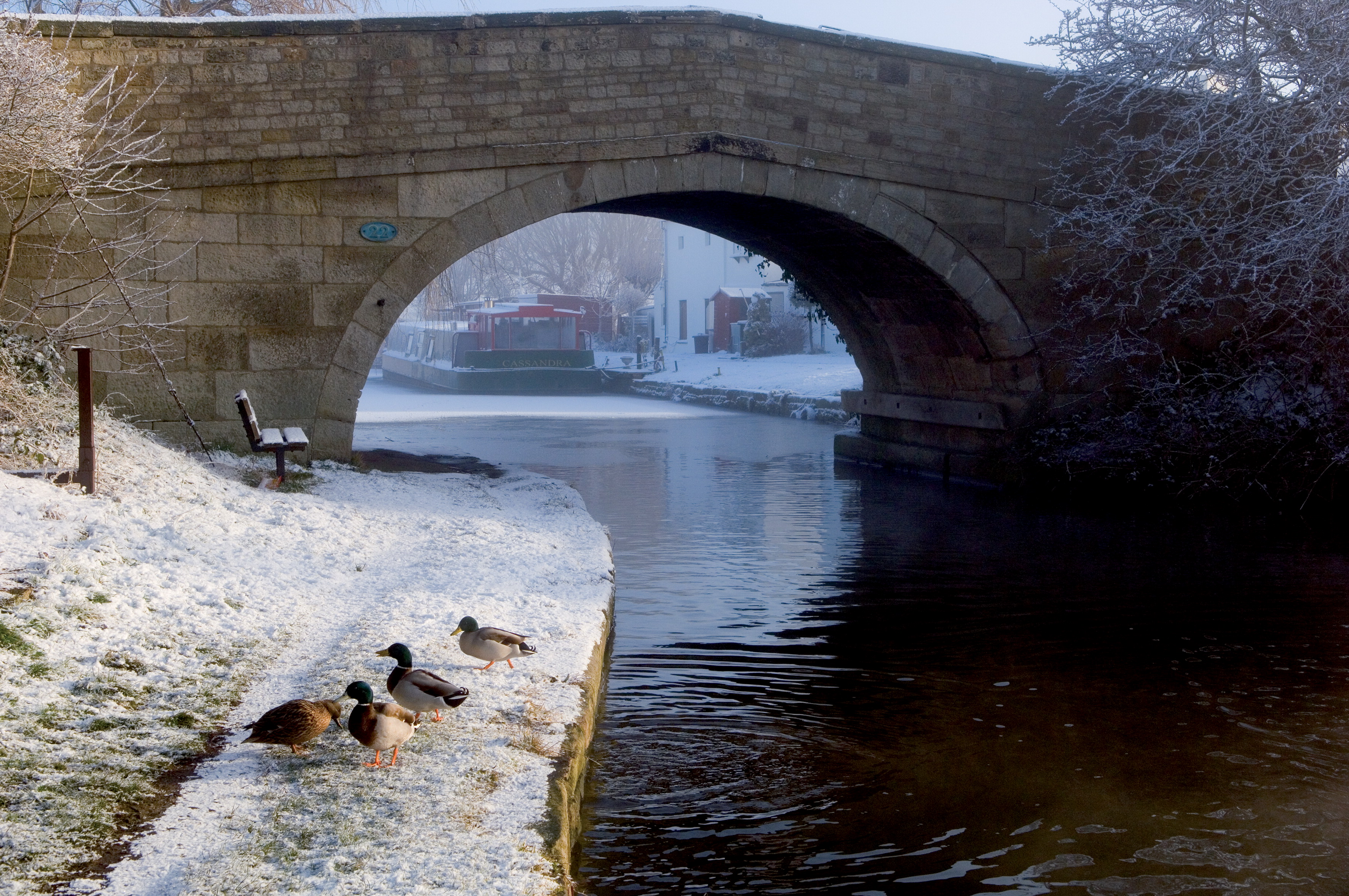
THE CANALS AND WATERWAYS OF ENGLAND AND WALES provide spaces and an environment that are beloved by the public, and enjoyed regularly by millions of people. They are undoubtedly a national asset. However, it was not always this way. Originally, they were key transport arteries within the country and even more important with the economic explosion of the industrial revolution. They then entered a period of decline after the Second World War as they were abandoned and unloved. It took major efforts from dedicated people to save them and return them to their former glory, and their continued transformation provides a wonderful recreational resource to many.
THE CUSTODIAN OF THE WATERWAYS
This national asset is made up of tens of thousands of structures and hundreds of miles of channels, paths and banks, each one of them an asset that needs to be cared for and maintained. This is the job of the Canal & River Trust. It was formed as a charity in July 2012 from British Waterways. Its mission is to ‘protect, manage and improve the nation’s canals and river navigations for the millions who enjoy them’. The Trust is the guardian of more than 2000 miles of historic inland waterways across England and Wales. It maintains the nation’s third largest collection of listed structures (more than 2700), World Heritage Sites, Scheduled Ancient Monuments and Sites of Special Scientific Interest (SSSIs), as well as reservoirs, embankments and cuttings and many important wildlife habitats. The value of its assets has been estimated at £18 billion.
The Trust is responsible for an eclectic range of assets, ranging from bridges to boat lifts to pumping stations, from mile posts to docks to historical assets such as pill boxes and heritage cranes, from locks to reservoirs to visitor centres, from aqueducts to weirs to stop gates and sluices. It also has to look after environmental habitats in its care, including populations of bats and voles, as well as green spaces. The water in its canals and rivers is not just used for hosting boats – it is also used for cooling and in fire protection systems, and even drinking: if you have ever had a glass of water supplied by Bristol Water it will most likely have travelled along one of its canals.

WHAT IS INVOLVED
Waterways contribute to the economic, social, environmental and cultural wellbeing of the nation. The Trust’s waterways and museums already attract 4.3 million regular users, and it estimates they are visited by 18 to 20 million people each year. This includes boaters, of course, but also walkers, fisherman, cyclists, commuters and many more. But the Trust believes they can be used by many more people from a wide range of communities. It knows that to achieve this, it needs to provide a sustainable attractive, reliable and safe environment for the public.
Maintaining the canals and waterways requires significant investment, and the Trust spends more than £100 million each year on its network. To do this, it relies on a Government grant, commercial fees, donations and other sources of income. It has a duty to manage its assets in the best possible way to realise the benefits and values of waterways for users and stakeholders. Moreover, the Trust is transforming itself from an organisation that manages waterways to one that improves the wellbeing of the nation, that is from a Waterways Trust to a Wellbeing Trust.
THE RECENT PAST
On its formation, the negotiation with Government came with a number of agreed Key Performance Indicators (KPIs) that the Trust has to hit to maintain an initial 15-year grant. The grant continues to 2027 and a renegotiation of the grant is planned around 2022. The Trust knows it has to show how it has managed its stewardship of the waterways with a high level of excellence in order to secure a positive renegotiation with Government.
The portfolio of assets the Trust has to maintain is large and extremely diverse. Some of it is highly specialised or requires sympathetic care because of its historic nature. This means that the cost of maintenance is high and would exceed the available budget without judicious targeting of activities. This was a challenge because it was difficult to prove the relative importance of different asset types and the comparative impact of assets degrading and failing. The Trust acknowledges that, historically, it had been working with the view that if it did not have enough money to maintain all its assets then it could at least console itself with understanding the condition of them by inspecting them regularly, perhaps too often, to compensate. The Trust realised that this approach would not be sustainable in the long term.
BRINGING IN THE MODELLERS
In the past, the Trust used a simple approach of grading assets in five subjective levels from good to poor, which were used to broadly prioritise interventions. It also used another prioritisation approach based on a notification system, where higher numbers of notified issues were more likely to result in an intervention on that asset. This dual approach led to inefficiencies within an asset class and there was no opportunity to trade-off between asset types. It also did not allow for strategic planning.
The Trust wanted to apply modern condition-based assessments and reliability centred maintenance. New blood in the organisation saw the opportunity to pull through expertise from other domains, such as the regulated utilities which have developed sophisticated modelling approaches. decisionLab is a player in both the water and power distribution sectors, where it helps companies optimise their investments, and it was selected by the Trust to support its efforts.
The modellers’ focus was on how to convert the condition assessment data and expert opinion into probabilities of failure and degradation rates
THE CHALLENGE
decisionLab’s aim was to enable the Trust to understand the true health of its network and all its assets – both now and projecting into the future – and transform the way it manages them. The Trust wanted an approach that was meaningful to its engineers and justifiable to stakeholders requiring it to have a solid technical basis. It had to be practical in terms of the resource demands and providing outputs that could be used to create intervention plans and investment strategies. It wanted a methodology that was consistent across all asset classes to facilitate adoption across the organisation and support optimal asset management across the full portfolio. Importantly, it wanted to be able to do more strategic planning, developing long-term asset plans that ensured that the Trust could truly manage risk in a sustainable way and based on a solid foundation. decisionLab also felt that the approach developed had to be ownable by the Trust, both at a senior and an operational level, to maximise the chance of success and enable the Trust to be self-reliant and sustain longevity of the capability.
This presented a sizeable set of challenges to the modellers. The desire for a consistent approach that could be applied to the extraordinary variety of asset types: numerous types including structures (cranes, bridges, etc.), buildings, mechanical and electrical equipment, waterways and reservoirs, culverts, weirs and many more; ranging in ages of 200+ years to modern Supervisory Control and Data Acquisition (SCADA) equipment; localised assets as well as linear assets; and very many of a bespoke nature. There were also numerous causes of failure, with each of these potentially having a different consequence and intervention for the same asset type. One of the biggest challenges was a lack of quantitative data both on condition and failure, as the Trust relies on inspection assessments of assets, which have generally been qualitative in nature. However, what the Trust lacked in data it had an abundance of engineering expertise, and the modellers used this to drive the solution, namely to use an engineering-led approach that translated expert judgement into a mathematical framework.

COLLABORATION BETWEEN ENGINEERS AND MATHEMATICIANS
From the beginning, the modellers and engineers worked together. It started with a pilot, covering three asset types: brick arch bridges, culverts and lock gates. This provided enough data within each asset type for the team to develop the modelling approach, and sufficient range to ensure the methodology created was consistent and flexible. An asset lead took responsibility for each asset class within the Trust, and provided engineering expertise to the modellers and applied the prototype models they developed to their assets and the data available.
decisionLab looked at what others had done. The electrical distribution industry has a well-established modelling approach that is underpinned by a wealth of data, but this need for extensive data meant it was not well suited to application in canals. The Highways Agency has commissioned work on condition-based assessment of bridges and other structures. This seemed much more promising. However, when the team applied it to the pilot assets, the results were disappointing mainly because it provides two measures – a worst case value and an overall optimistic assessment – neither of which matched the experts’ grading. The modellers did adopt the assessment approach used in the Highways Agency work: a simple two-dimensional matrix for each major component of the asset, where the severity of a degradation feature and its extent were each scored. This was intuitive to the engineers and provided a quantifiable input into the model.
DEVELOPING A COMMON METHODOLOGY
The modellers decided to go back to technical basics, using reliability/survival theory to underpin the approach, both for the health assessment and future health prediction. The modellers’ focus was on how to convert the condition assessment data and expert opinion into probabilities of failure and degradation rates. They initiated this by asking the engineers their opinions on what was the relative importance of different features and factors, hypotheses about the numbers of failures if interventions were not carried out, and the impact of failure events. The engineers found this challenging; however, these were initial values to seed the mathematical modelling. The model would then estimate the condition of each individual asset, and predict its future degradation, its probability of failure in any year and the cost of failure. When the model is applied to all the assets of a particular type, it provides estimates on expected numbers of failures in any one year, as well as other metrics, that can be compared with reality and enable the engineer to calibrate the model.
Now that the model could estimate the probability of failure of an asset both now and any time in the future, the engineers could then express what the triggers would be for them to intervene on the asset. These thresholds were specified against the two-dimensional severity-extent matrix, which could then be translated into the quantities used by the model. The team developed simple cost models for intervening and also priced the impact of a failure in terms of safety related incidents, repair or replacement, the disruption to the network, environmental damage and compensation to other organisations. This monetised risk-based approach is used in the electricity distribution industry and other sectors, and provides a means of trading off different investments, and the team found it effective here.
The asset leads have been using the model to develop their asset strategies, which involves understanding the current health of the assets, predicting how they will degrade over time, and then intervention strategies matching different budget scenarios, including doing essential works only, the unconstrained case where money is no object, a budget limiting case and, most usefully, where the level of risk within the asset portfolio is kept within a set limit. The engineers use the model for all of these analyses and to support them in developing their strategies.
This has been a culture shock for the Trust’s engineers
WHAT DIFFERENCE HAS IT MADE?
This has been rather a culture shock for the Trust’s engineers. At the start, there were some mutterings around the business that it could not model the assets as it would be too difficult. Some felt that ‘we have 200-year-old assets’, with no ‘as built’ drawings, and poor, or some cases non-existent, information on historic interventions. Engineers did not like being forced to guestimate and they did have to make many well-educated guesses at the start of their model journey as they were ‘asked to use your engineering judgement’. But in the end, the engineers have come to take ownership of their models. Indeed, there was a conscious decision to train all those involved in the models to understand the maths behind the approach so that they are not seen as black boxes. The common feeling now is that a huge amount of subjectivity has been taken out of the condition assessments.
the Trust is beginning to be able to stop collecting data it does not use, and start collecting data it now needs
This is a journey that is not yet complete – it has been extended to ten asset classes, including 3200kms of the canal network itself. But already the work is having an impact: the Trust has been able to optimise the inspection frequency for culverts and other assets are sure to follow suit; inspections are now being designed with digital data collection instead of word reports; and the Trust is beginning to be able to stop collecting data it does not use, and start collecting data it now needs. It also means that formal asset strategies can be produced with confidence whereas it had never been possible before. Richard Parry, Chief Executive of the Canal & River Trust, says ‘the Asset strategy and model work is delivering a step change in the Trust’s understanding of our asset risks, enabling the Trust to improve its prioritisation of its £100 million plus annual expenditure to maintain, manage and care for the waterways so that we can make life better by water for the millions of people who use, visit and live alongside them.’
the Asset strategy and model work is delivering a step change in the Trust’s understanding of our asset risks, enabling the Trust to improve its prioritisation of its £100 million plus annual expenditure to maintain, manage and care for the waterways so that we can make life better by water for the millions of people who use, visit and live alongside them
The journey the Trust and decisionLab have been on has been exceptionally beneficial for both organisations. The Trust has knowledge that was never available before and is able to plan both operationally and strategically in ways that were previously impossible, and it is feeding into the business planning at all levels of the organisation. decisionLab has developed a process and a model that has very wide applicability, and the approach is currently being piloted on a large naval facility in the UK for a different client. The modellers have also gained a huge respect for Victorian engineers, and the heritage they have left our country for us to benefit from.
Additional information
Notes on contributors
Ian Griffiths
Ian Griffiths is the Chief Strategist at decisionLab. He has more than 25 years’ experience in science and technology modelling, leading R&D and analytics groups in both government and industry, covering applications in defence, security, transport, insurance, power and infrastructure. He is passionate about using modelling and data science to inform and improve decision making in organisations and businesses.
Sheena Wilson
Sheena Wilson is an Incorporated civil engineer with over thirty years’ experience with Canal and River Trust (formally British Waterways). The first fifteen years working on the canal infrastructure - building pumping stations and weirs and repairing numerous heritage structures with the last fifteen in asset management specialising in data, systems and processes. She has a love of the canals stemming from canal boat holidays with the family, canoeing and more recently cycling and walking.
